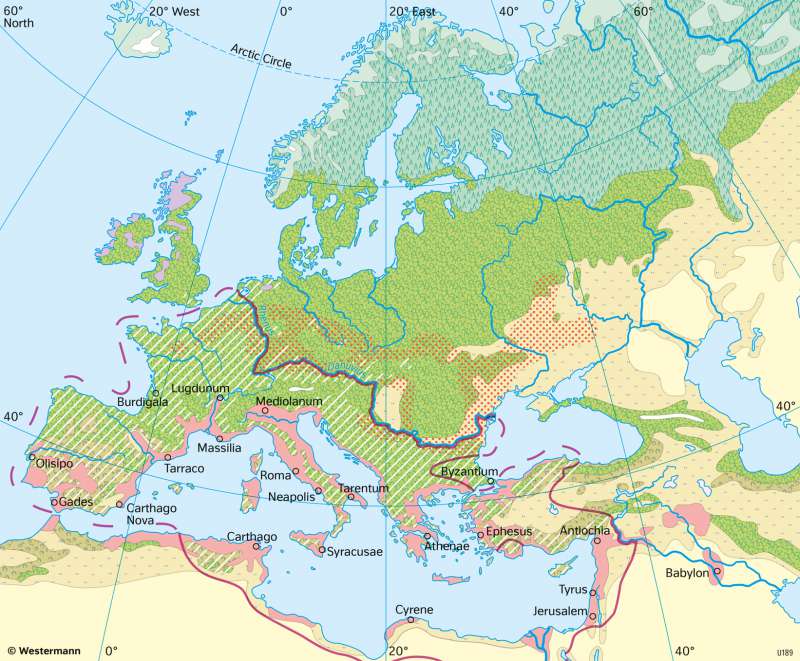Europe - Land use two thousand years ago
Agriculture and landscape change
978-3-14-100890-6 | Page 55 | Ill. 3

Overview
2000 years ago, most parts of Europe were dominated by forests. The zone of northern coniferous forest in the almost uninhabited north was followed by an extensive zone of deciduous and mixed forests. In the north and east of the Danube River and Rhine River, they formed a dense primeval forest, which was only partly settled by Germanic peoples.
Causes for sparse land use
A major reason for the minimal clearings then was the low population density. At the turn of the century, there were an estimated 300 million people on earth, less than a quarter of the population of China today. It was particularly low in Germania, which was not yet urbanised. The farmers of Western, Central and Eastern Europe preferred to settle on fertile loess soils. They benefited greatly from the invention of iron, which made it possible to produce ploughs and harder scythes, sickles, and knives. Crops included barley, emmer, spelt, millet, rye, and oats. An important domestic animal of the Germanic peoples was the pig. Pigs were bred on forest pasture in the extensive forests. Additionally, depending on the circumstances, cattle, goats and sheep, horses and poultry were kept.
Mediterranean and oriental land use
Very densely populated and already extensively deforested by the first advanced civilisations, including the Hittites, Egyptians, Phoenicians, Persians, and Greeks, were the coastal strips around the Mediterranean, where many important cities of the era were concentrated.
Land use in the Roman Empire
Clearances were more advanced in the territory of the Roman Empire to the west and south of the Rhine River and Danube River than in Germania. With the founding of cities by the Romans and the development of a network of roads. Not only was there a greater demand for wood as a raw material, but also an efficient agricultural sector developed to supply the cities and the army camps with several thousand legionaries. Apart from meat, important products of Roman agriculture were various types of grain, olive oil, figs, wine, dates, and honey, but also flax, wool, cork and skins.




